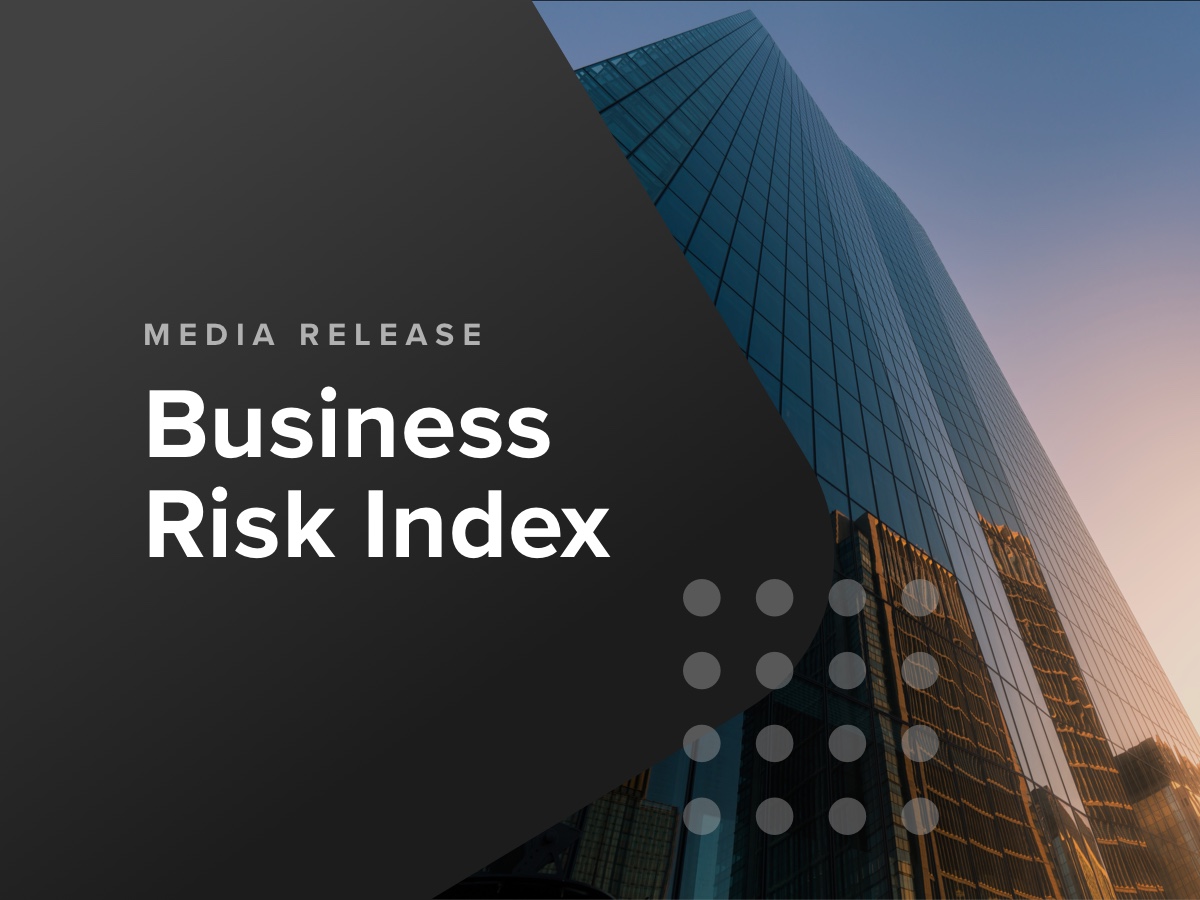The latest CreditorWatch Business Risk Index covers November, the first month since May where Australia has been relatively lockdown free.
- The CreditorWatch Business Risk Index (BRI) provides unique insights into the health of Australian businesses by region and industry.
- Data from CreditorWatch for November highlights that across businesses and regions, you can’t just flick a switch to turn the economy back on again. The recovery will take time.
- There are a substantial number of Small and Medium-sized Enterprises (SMEs) that survived the experiences of lockdowns, but still confront the legacy of the debilitating impact those lockdowns had.
- Retail is a good example of a sector which should bounce back, as is Food and Beverages. But just because demand is coming back doesn’t mean businesses in these areas suddenly have slick balance sheets.
- We will need to have patience for an economic recovery that will take time to come together well into 2022.
The key outcome for November 2021 was the accelerating progress in the removal of COVID restrictions in New South Wales, Victoria, and the Australian Capital Territory. We still saw shifting goal posts around the country as COVID hit the Northern Territory, a new variant of the virus came on board, and cases emerged in South Australia and Queensland.
This is a reminder that COVID isn’t going away anytime soon. Let’s not forget, though that our ability to fight it has evolved and that trend should continue to build strongly. In the meantime, it’s a little but like sleeping with the enemy. COVID creates uncertainty which is bad for business. Early political argy bargy ahead of a federal election in either March or May next year doesn’t help.
Thankfully there are signs of resilience with business confidence looking in reasonably good shape. For example, we have the very bright news that NSW and Victoria are back open for business. This is a boon for a great number of SMEs. These are our two largest states and represent the engine room of business and broader economic activity in Australia. We also have the resumption of some international flights out of Sydney and Melbourne airports.
The CreditorWatch Business Risk Index for November 2021 reveals the disparity of conditions that industries (and regions) continue to face. Now more than ever we need to recognise that economic recovery doesn’t occur in a straight line.
In terms of Australian industries, the BRI identifies the three most at risk in terms of payment defaults.
Highest*
- Construction: 12.4%
- Accommodation, food and beverage: 11.1%
- Transport, postal and warehousing: 10.7%
*Percentage of firms in arrears by 60+ days in each industry.
This update tells a clear tale of what is occurring in the broader Australian economy. Construction was hard hit by mandatory industry shutdowns. Now the industry faces severe supply constraints in items such as timber. It is also a challenging industry in terms of gearing back up swiftly – returning to the point about not just being able to flick a switch. This all shows up in a payment arrears figure of 12.4 per cent for November, a number that is unlikely to materially change in approaching months.
The Food and beverage services sector reveals a payment arrears figure of 11.1 per cent. The sector suffered at the hands of so few businesses being fully open during lockdown periods. As people flock back to venues the business environment will thrive again, but there were enormous overheads to cover through the middle of 2021 and over the last nearly two years in general. We need to consider that ‘patience’ mantra here.
The transportation, postal and warehousing sector continues to be hit by strike action while global supply disruptions persist. A boom in online shopping is one thing, but these sectors need stronger foot traffic and demand from regular brick and mortar businesses – a point we have made before.
Towards the end of 2021 we face a very diverse economic recovery. The aggregate bounce-back from a contraction in economic activity in the September 2021 quarter, talked about (and hoped for) so often now, masks the detail of the situation. It serves as a reminder that there are a great many opportunities for Australia’s SMEs that survived. There will still be some that won’t, although not for the want of trying. Tracking the credit health of SMEs through the CreditorWatch Business Risk Index and related metrics will be crucial as we close in on the end of 2021 and approach 2022.
Best and worst performing regions
One of the key indicators provided by the CreditorWatch Business Risk Index is geographical information which tracks over 300 regions across Australia. The CreditorWatch BRI identifies the best five and worst five performing regions in Australia.
Based on defaults for November 2021 compared to November 2020, plus the probability of default out to November 2022, the five best performing regions (i.e., those at the least risk of credit default) are: –
- Murray River – Swan Hill, VIC: 3.69%
- Limestone Coast SA 3.73%
- Grampians, VIC 75%
- Moree – Narrabri NSW 3.76%
- Glenelg – Southern Grampians VIC: 3.80%
All these geographical areas have relatively low population densities, reinforcing how population and distance from capital cities can help. That having been said, Moree did have a COVID scare. In fifth position the November BRI reports the Victorian region of Glenelg – Southern Grampians with a default risk of 3.8 per cent. That region replaces the South Australian region of the Eyre Peninsula and Southwest.
The top five geographical areas at greatest risk of credit default are*: –
- Merrylands – Guildford NSW: 7.73%
- Gold Coast – North QLD: 7.73%
- Bringelly – Green Valley NSW: 7.69%
- Canterbury NSW: 7.56%
- Coolangatta QLD: 7.50%
The Marylands-Guilford region in NSW now tops the list with a default risk of 7.73 per cent, equal to the Gold Coast. This NSW region took one of the hardest hits within overall Western Sydney when the extended lockdown prevailed. Southeast Queensland has certainly felt the impact of COVID lock downs, and this shows in the highlighted risk for both the Gold Coast and Coolangatta, where the GC airport is located.
Bringelly and Canterbury, both in Western Sydney, come in at number three and number four. These are important metrics because they remind us that while NSW is Australia’s largest economy there remains huge dislocation across Sydney. It will be an uneven economic recovery, and this will have an impact on several SMEs. Remember, no straight-line recovery.
Credit enquiries
The number of credit enquiries jumped by 17 per cent in November, in non-seasonally adjusted terms. This is the largest increase since March. Over the November ‘quarter’, credit enquiries rose by seven per cent compared to the same period in 2020. We’re a long way off from cooking the roast, but a continued improvement in credit enquiries would provide a key leading indication of better business conditions and consequently overall economic activity.
External administrations
The number of external administrations were also up in November – by 15 per cent – the second consecutive increase. This result follows consistent falls from June in the lockdown periods. We need to observe far more evidence before calling a post lockdown return to normality, but things are moving in the right direction. There are businesses that won’t survive.
Court actions
The number of court actions spiked by 85 per cent in November, in original terms. That is an extraordinary result. Over the November 2021 ‘quarter’ court actions increased by twenty-one per cent to be up by 27 per cent compared to the same period last year. The number of court actions is at its highest since March 2020 and possibly signals a path back to normalised proceedings, as CreditorWatch has long suggested will develop over time. This is a metric to keep an eye on.
Defaults
The number of defaults spiked higher by 53 per cent in November, albeit that is not a seasonally adjusted number. It is a preliminary sign that Small and Medium-sized Enterprises (SMEs) are engaging with a post-lockdown period which isn’t entirely comfortable. It will be important to track how the number of defaults fares in approaching months.
Defaults are like other key contemporary CreditorWatch indicators such as external administrations and the number of court actions, outlined above. All the indicators spiked in November, and we shouldn’t ignore that.
Outlook
The economy is coming back from the contraction of the September 2021 quarter, but we are unlikely to see a consumer-led recovery where households begin spending the majority of the $400 billion in savings they have accumulated. There is no magic bullet to a sustainable and diverse economic recovery. The recovery will be patchy and will take time, although we will almost certainly avoid another contraction in Gross Domestic Product (GDP) in the December 2021 quarter. Off a positive base the economy is expected to continue growing in 2022.
Harley Dale
CreditorWatch Chief Economist



